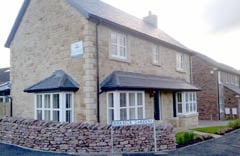UK house price inflation at 9.8%
House prices have risen 9.8% while consumer price inflation has fallen to just 0.3% and the prices of goods made in the UK have actually reduced by 1.8%.
These are the latest figures from the Office for National Statistics. They are not quite comparable because the housing inflation rate refers to the year to December while the consumer and producer rates refer to the year ending in January. Nevetheless, the trend is clear.
The rise in the price of houses would indicate demand contiues to be greater than supply, which is why politicians are so keen to get more houses built. But with Government schemes still supporting house buyers, and interest rates low in any case, why wouldn't banks make money available for mortgages rather than businesses?
Let's hope the banks are being more cautious this time than they proved to have been prior to 2007/08.
Inevitably, the highest rate of house price inflation is in London (13.3%) and the South East of England (11.5%). But even removing the effects of those areas leaves the average house price increase for the rest of the UK at what still looks like an unsustainable 7.4%.

